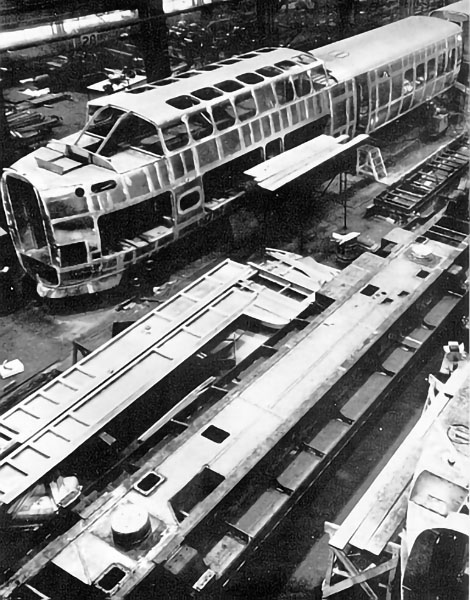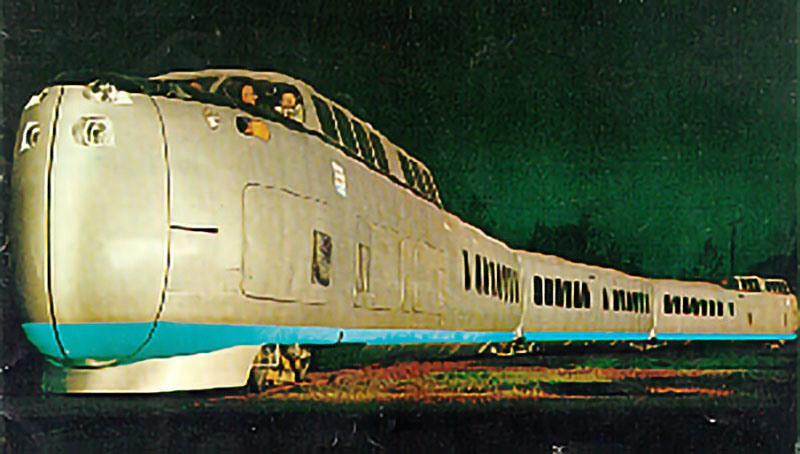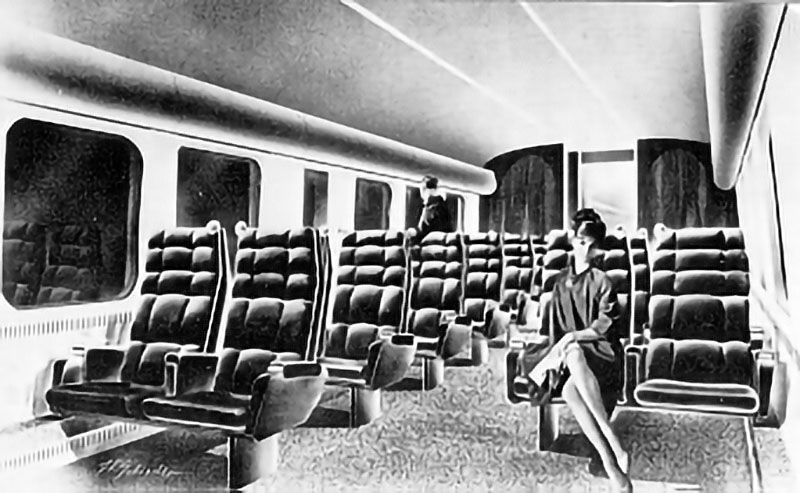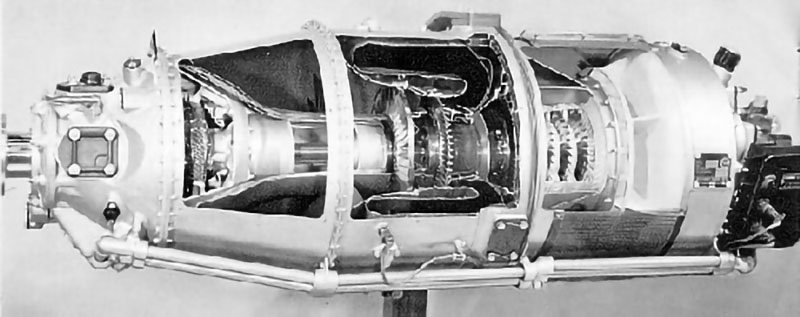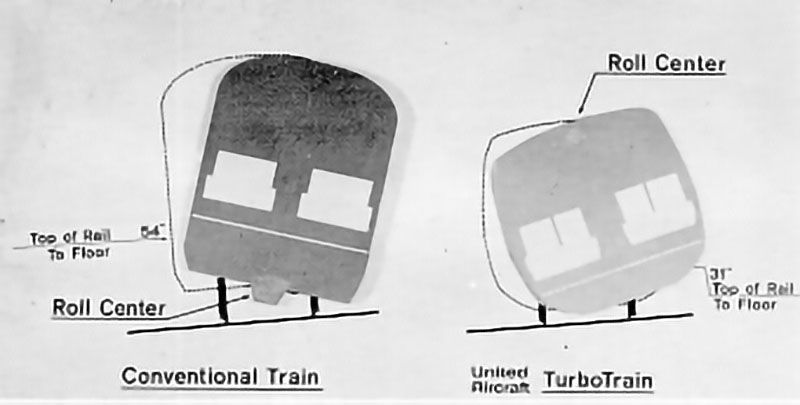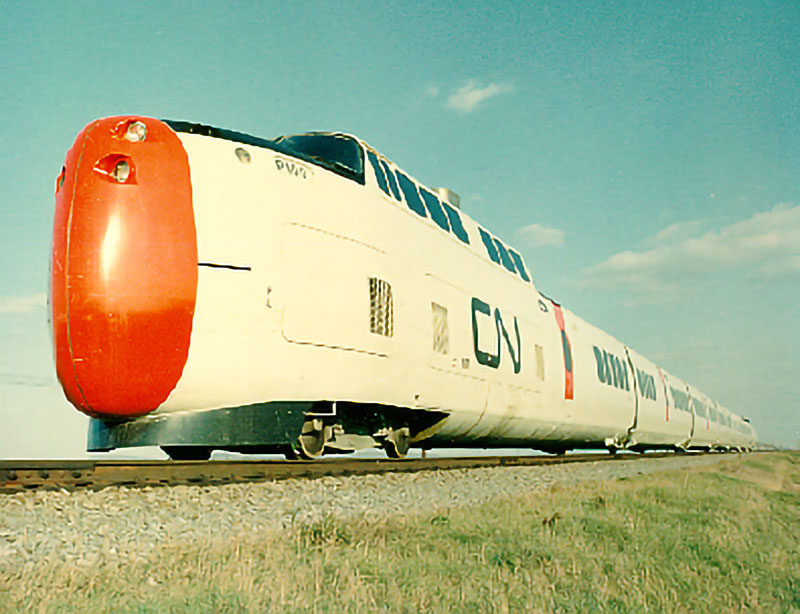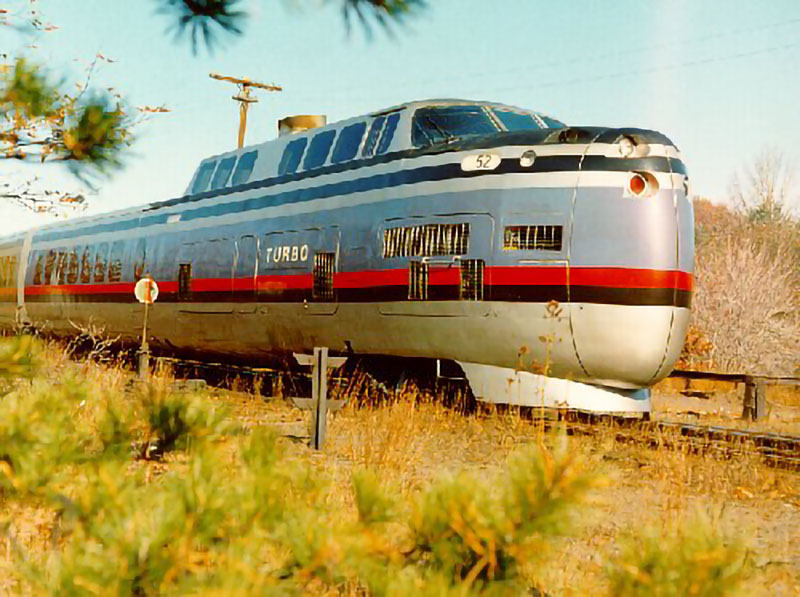Sikorsky Product History
Sikorsky TurboTrain
Description
The TurboTrain was a lightweight aircraft gas turbine-powered passenger train conceived by United Aircraft Corporation and developed and marketed by Sikorsky Aircraft’s Surface Transportation Systems. It entered service in 1968 in the United States and Canada.
The TurboTrain was designed to be lighter, faster, quieter, smoother and more reliable than conventional trains of the 1960s – and cheaper to run. It was the first train to be powered by an aircraft-type gas turbine engine, the Canadian Pratt & Whitney ST-6 shaft turbine engine.
Produced in lengths ranging from 3 to 9 cars per train, the TurboTrain possessed a streamlined, airplane-like exterior designed to minimize drag, with a skin of smooth, heavy -gauge aluminum. A domed, passenger-carrying power car was located at each end, one pulling and the other pushing the one or more passenger coaches in between. The trains, being double-ended, required no switching or turnarounds, permitting a higher rate of equipment utilization.
TurboTrain cars were 2 1/2 feet lower than other train cars of the time. The lower center of gravity, pendulous suspension system, and guided axles enabled this new train to round curves, with no change to existing railroad beds, at speeds up to 40 percent greater than possible with other trains. As in an airplane, TurboTrain cars banked inward around curves under the influence of centrifugal force, as opposed to the outward motion experienced in conventional trains. By means of guidance assemblies, the axles – one between each pair of cars – steered around curves, reducing flange wear and the tendency to shimmy. The result was a smoother, swifter, more efficient ride around curves, with greater passenger comfort.
The capacity of the cars depended on the seating arrangements and furnishings specified by the operating railroad. A typical power dome car, with parlor and coach compartments, had room for about 50 persons. Non-powered coaches sat about the same number of passengers.
Special Features
The TurboTrain has a number of advanced technical features. Key among them are utilization of an aircraft-type gas turbine engine for power and a pendulous banking suspension system.
Inside the cars, the layout and decor were designed for maximum passenger comfort. There are carpeting and draperies, soft, indirect lighting, individually controlled reading lights at each seat, fold-down tables, reclining seats with head rests, and carry-on luggage racks at the doors. Compact but fully equipped galleys are installed for fast, efficient food service.
Electric heat and air conditioning add to passengers comfort aboard the TurboTrain. The cars are slightly pressurized to keep out dust and to keep the noise level lower.
The gas turbine powerplant is utilized in more than 20 types of aircraft and a number of non-aviation applications. In the train, the turbine’s shaft drives gears instead of propellers. The gears turn the train’s wheels. The gas turbine, the ST6, is produced by United Aircraft of Canada Limited. It is operated at 400 horsepower, yet weighs only 300 pounds with accessories. The number of engines used in each train varies according to perfor mance desired. Each train has bays for up to seven engines but fewer can be used. More engines give faster acceleration and a higher top speed. In each train, one gas turbine is always used to drive an alternator to produce electricity for the train’s needs. Since the gas turbines are so small and compact, they are located under passenger-carrying domes, thus permitting complete utilization of the train’s interior. Dome cars are located at each end of the TurboTrain to give it bidirectional capability.
A major technological advance in the TurboTrain is its pendulous banking suspension system. The trains are suspended from near the top of the cars, above the center of gravity, on an A-frame type of assembly. The suspension system is located between the cars, except in the power dome cars. There it is located beneath the domes. The suspension system causes the train to bank inward around curves under the influence of centrifugal force, as opposed to the outward motion experienced by conventional trains. This enables the train to round curves with passenger comfort and safety at speeds 30 to 40 per cent faster than conventional trains.
This feature, plus faster acceleration and higher cruising speeds of the TurboTrains, permits significant reduction of trip times between cities, compared with conventional equipment.
The TurboTrain was operated at a speed of 170 miles an hour on the U.S. Department’s high speed test track on the Penn Central’s main-line between Trenton and New Brunswick, New Jersey. In revenue service, it is operated in some stretches at speeds of more than 100 miles an hour. The speed at which the train can be operated depends upon the condition of the track, the number of grade crossings and the type and condition of the signal system.
Speed
The TurboTrain can travel at speeds up to 170 mph but initial top speeds in passenger-carrying service this year will be about 120 mph.
Under present schedules, the best rail time offered between Boston and New York is 4 hours and 15 minutes; between New York and Washington, 3 hours and 35 minutes; between Hartford and New York, 2 hours and 20 minutes. United Aircraft’s TurboTrain can reduce these times, respectively, to 3 hours, 15 minutes (with four intermediate stops); 2 hours and 36 minutes; 1 hour and 40 minutes. Performances were calculated through detailed studies, made with the help of computers at United Aircraft Research Laboratories, which simulated actual train operations over present trackage, including all curves, crossings, and grades as they now exist on the runs studied. With improvements in railroad signaling, travel times can be reduced still further. The Canadian National Rapido, described as the fastest intercity passenger train in operation in North America, now runs between Montreal and Toronto, a distance of 335 miles, in 4 hours and 59 minutes. TurboTrains will cut this time to less than 4 hours.
Ecological Considerations
The TurboTrain is inherently favorable to ecology, compared with other systems, for several reasons. First, since it is made of lightweight aluminum and has other design features to reduce weight — for example, the TurboTrain has only two wheels between cars, compared with four at the end of each car in most conventional equipment — it requires a small Amount of horsepower for its high speeds and fast acceleration. A seven-car TurboTrain, using 2,000 horsepower, can carry the same number of passengers downtown-to–downtown as 150 automobiles (using an average of two passengers per auto). These autos would have a total of approximately 30,000 horsepower. Additionally, because of the high efficiency of the gas turbine engines, its effluents are only about one-fourth those of internal combustion engines of equal horsepower.
Another reason the TurboTrain will cause less damage to the ecology than some other proposed systems is that it requires no new rights-of-way. This means no additional housing need be destroyed nor nature disturbed to make way for the TurboTrain.
History
The TurboTrain was developed by United Aircraft Corporation. It was built to participate in the U.S. Department of Transportation’s Northeast Corridor high speed ground transportation demonstration project. In January, 1971, the Department of Transportation extended the TurboTrain operation for an additional two years and decided to increase the size of the two, three–car trains used in the demonstration. Sikorsky Aircraft is building four additional cars, two for each train, which will increase the capacity of each train from 144 seats to 240. These cars will be inserted into the trains in 1972. The trains are owned by United Aircraft and leased to the Department of Transportation. They are operated between Boston and New York by the Penn Central Railroad, which has a separate contract with the Department of Transportation for running the trains. Load factors for the first two years of operation have consistently averaged 60 to 70 per cent compared with the national average of 30 per cent.
Operational 1968
TurboTrains will be operated between Boston and New York as part of the Northeast Corridor high-speed ground transportation project under contract to the U.S. Department of Transportation. In Canada, Canadian National Railways will operate TurboTrains between Toronto and Montreal.
UNITED STATES – United Aircraft was awarded a contract in January, 1966 by the U.S. Government to build two three-car trains. United will lease the equipment to the Government for two years. The Boston-New York TurboTrains will be maintained by United Aircraft at facilities in Providence, Rhode Island.
CANADA – Canadian National Railways in May, 1966 ordered five TurboTrains of seven cars each for the Montreal-Toronto service under a lease-maintenance arrangement with United Aircraft. Canadian National trains will be operated in tandem sets of 14 cars with a total capacity of 644 passengers.
Potential
Leonard M. Horner, vice president, Surface Transportation Systems, Sikorsky Aircraft, said: “The TurboTrain is ideally suitable for use in a national intercity rail passenger network for a number of reasons. First, it would result in vastly improved service at a relatively low capital cost, since present trackage could be utilized. The TurboTrain could give U.S. rail passenger service a completely new image within a short period of time. Second, the train has been under development for six years and is therefore far more developed than any other non-electrified system. It has already suffered its growing pains and successfully overcome then. It is readily available without the necessity of years of expensive experimentation and development that would undoubtedly be necessary for any other new advanced system. Third, and very importantly, it is more favorable to the ecology than any other system because of its low pollution exhaust and because it requires no new rights-of-way.”
Related Articles
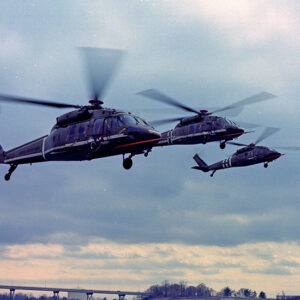
Bill Paul: Reflections on Sikorsky’s 100th Anniversary
Former Sikorsky President Bill Paul reflects on his career with Sikorsky, meeting Igor Sikorsky, and the Sikorsky Aircraft Company’s 100th anniversary.
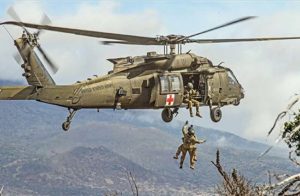
Sikorsky Lifts the Army
The U.S. Army saw the possibilities of the helicopter early in its development, thus beginning a relationship with Sikorsky Aircraft that continues to this day.
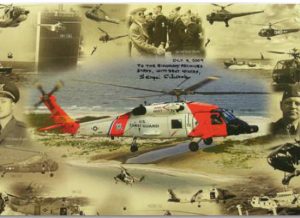
Sikorsky Serves the Coast Guard
A flight demonstration of Igor Sikorsky’s VS-300A helicopter at Bridgeport, Connecticut in April 1942 started an air-sea rescue revolution in the U.S. Coast Guard.
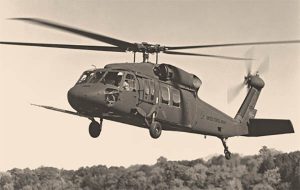
Bill Paul: Management Contributions to the Black Hawk Helicopter’s Success
Bill Paul recollects one of the key milestones of Sikorsky history, the win of the UTTAS program that became the Black Hawk helicopter.
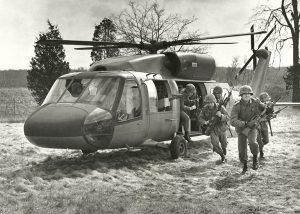
Ray Leoni: Recollections of a Sikorsky Junior Engineer
Ray Leoni recollects his 41-year career at Sikorsky Aircraft, beginning as a junior engineer and retiring as a Senior VP of Engineering and Advanced Programs.
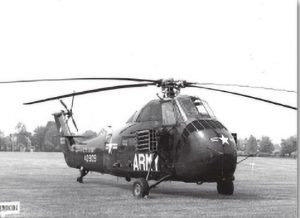
Evolution of the Armed Helicopter
Military users quickly understood the flexibility and fire-power of rotary wing platforms and ultimately evolved highly integrated weapons systems ready to protect themselves and others.
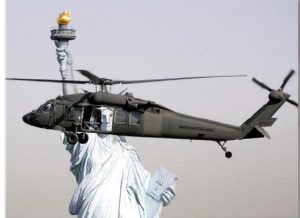
The Sikorsky Black Hawk in U.S. Military Service
When Black Hawk program manager Colonel Richard Kenyon received keys to Sikorsky’s first production UH-60A on October 31, 1978, the U.S. Army received the powerful, hardened assault helicopter it wanted.
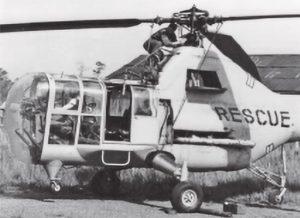
Sikorsky Helicopters in U.S. Air Force Rescue Squadrons
The HH-60W Combat Rescue Helicopter is the latest in the life-saving line of Sikorsky helicopters made for U.S. Air Force Rescue Squadrons. The Whiskey will round out a century of vertical flight rescue heroism.
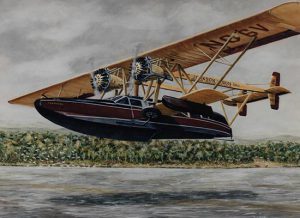
Sikorsky Aircraft Color Schemes
This issue of the newsletter illustrates some of the artistic variations in the exterior color schemes of aircraft delivered during Igor Sikorsky’s three careers.
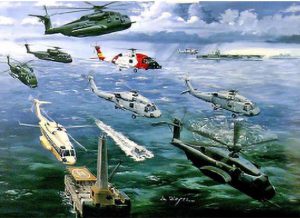
Sikorsky Aircraft Paintings by Andy Whyte
This issue of the newsletter is devoted to the aircraft designs and paintings by Andy Whyte, who had a 40 year career at Sikorsky Aircraft.
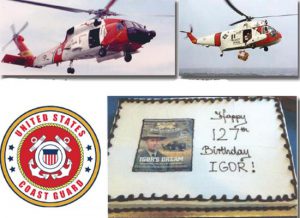
U.S. Coast Guard and Sikorsky Celebrate Significant Events
The United States Coast Guard and Sikorsky Aircraft celebrated two significant events in 2016. One century of United States Coast Guard aviation and the 127th birthday of Igor Sikorsky.
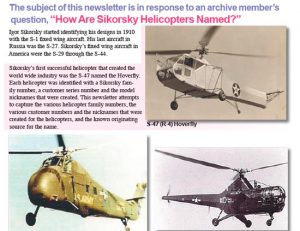
How Sikorsky Helicopters Are Named
The subject of this newsletter is in response to an archive member’s question, “How Are Sikorsky Helicopters Named?”


